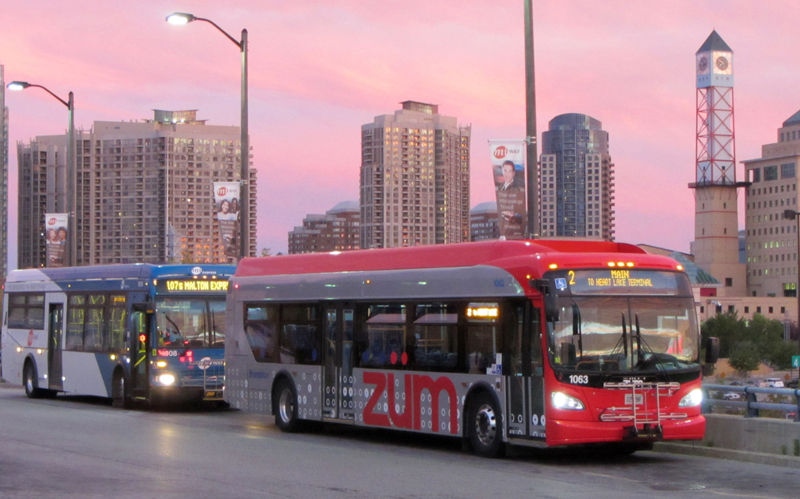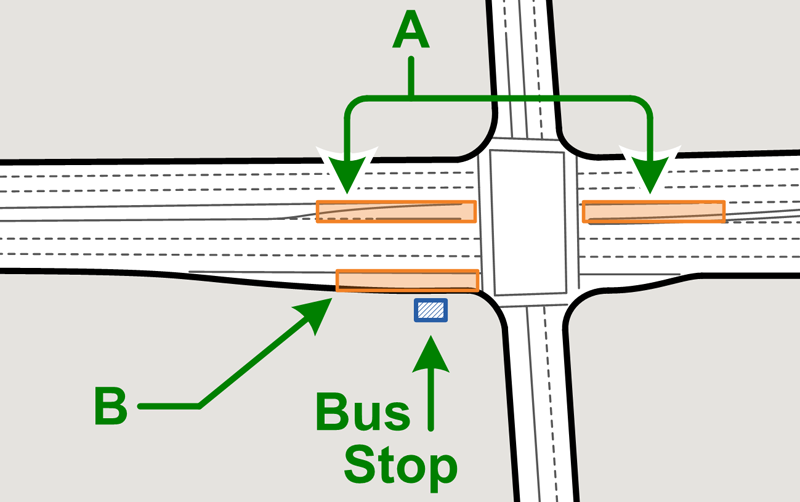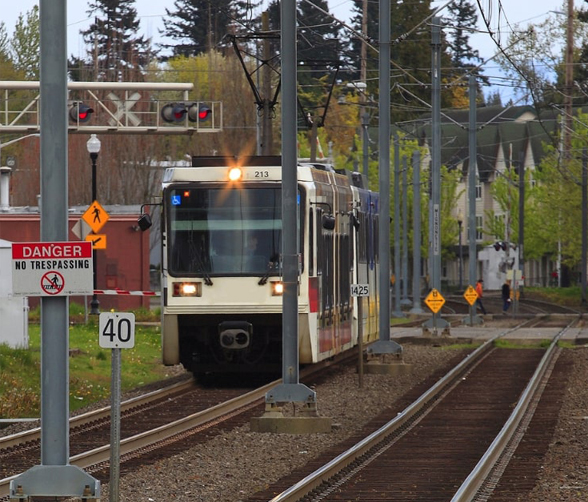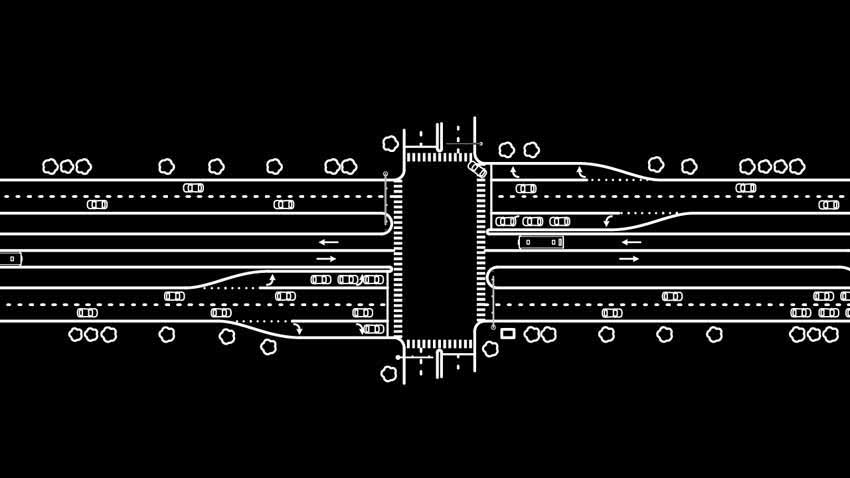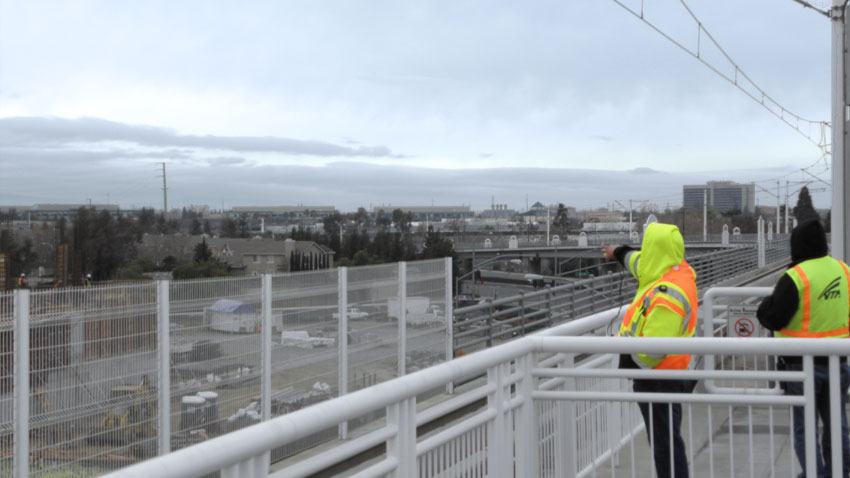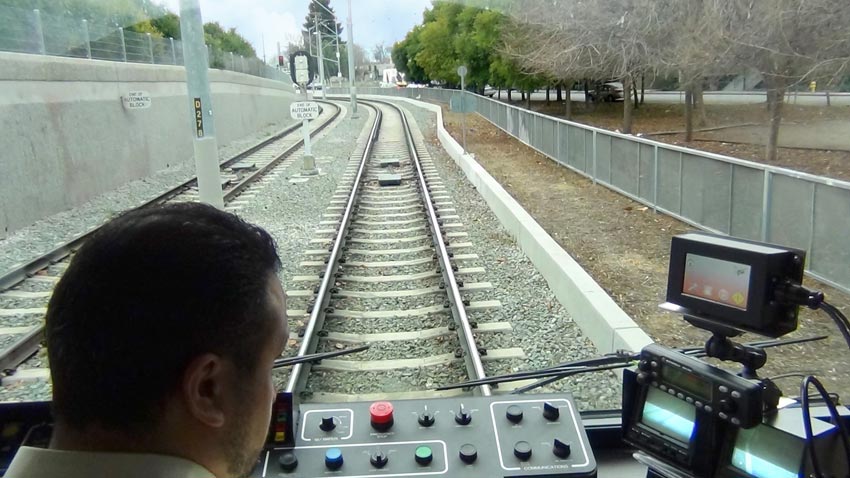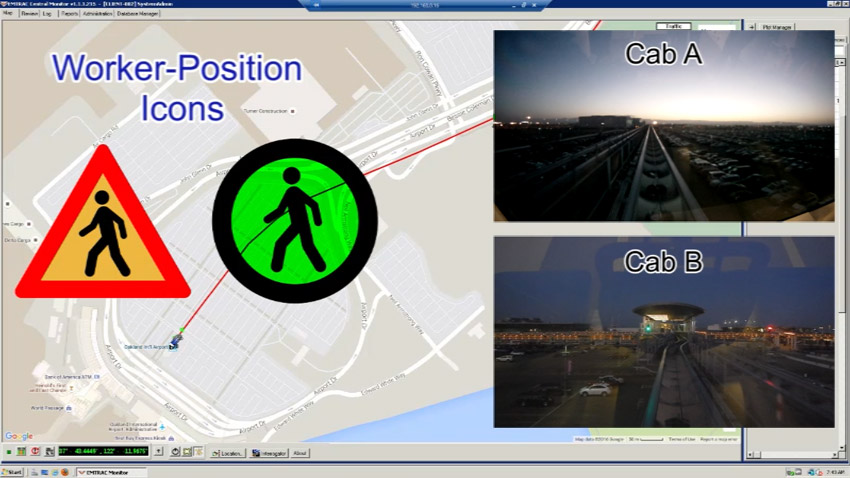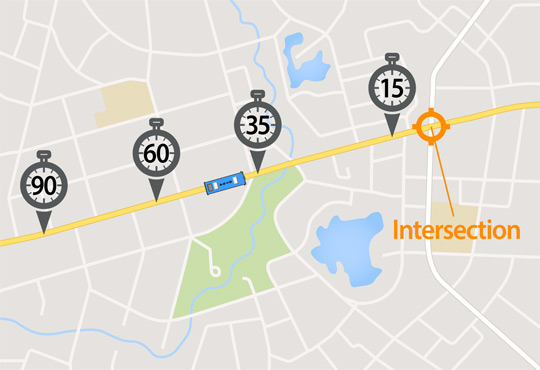
Adaptive Priority
Adaptive priority is a strategy for adjusting signal control based on real-time traffic conditions. “Its application to TSP continuously optimizes the effective timing plan based on real-time, observed data, including transit vehicle location.”[1]
The EMTRAC system provides the data needed to implement, or improve, adaptive systems by notifying the signal controller when an approaching bus reaches pre-defined ETA timepoints during its approach (for example, when it is 90, 60, 35, and 15 seconds from the intersection).
This system is unique to North America and takes advantage of features built into many signal controllers and TSP firmware. It reacts to changes in on-street congestion and bus-approach speeds in real time. As traffic volumes fluctuate, so do the positions of ETA time-points.
Upon receiving the bus ETA notifications, the traffic controller preconditions its internal timings in preparation of its arrival at the intersection. The advanced time-points help the signal controller gradually modify the timings to reduce the impact on the intersection while also maintaining coordination with other intersections along the corridor.
Applicable Patent: US No. 8,878,695


